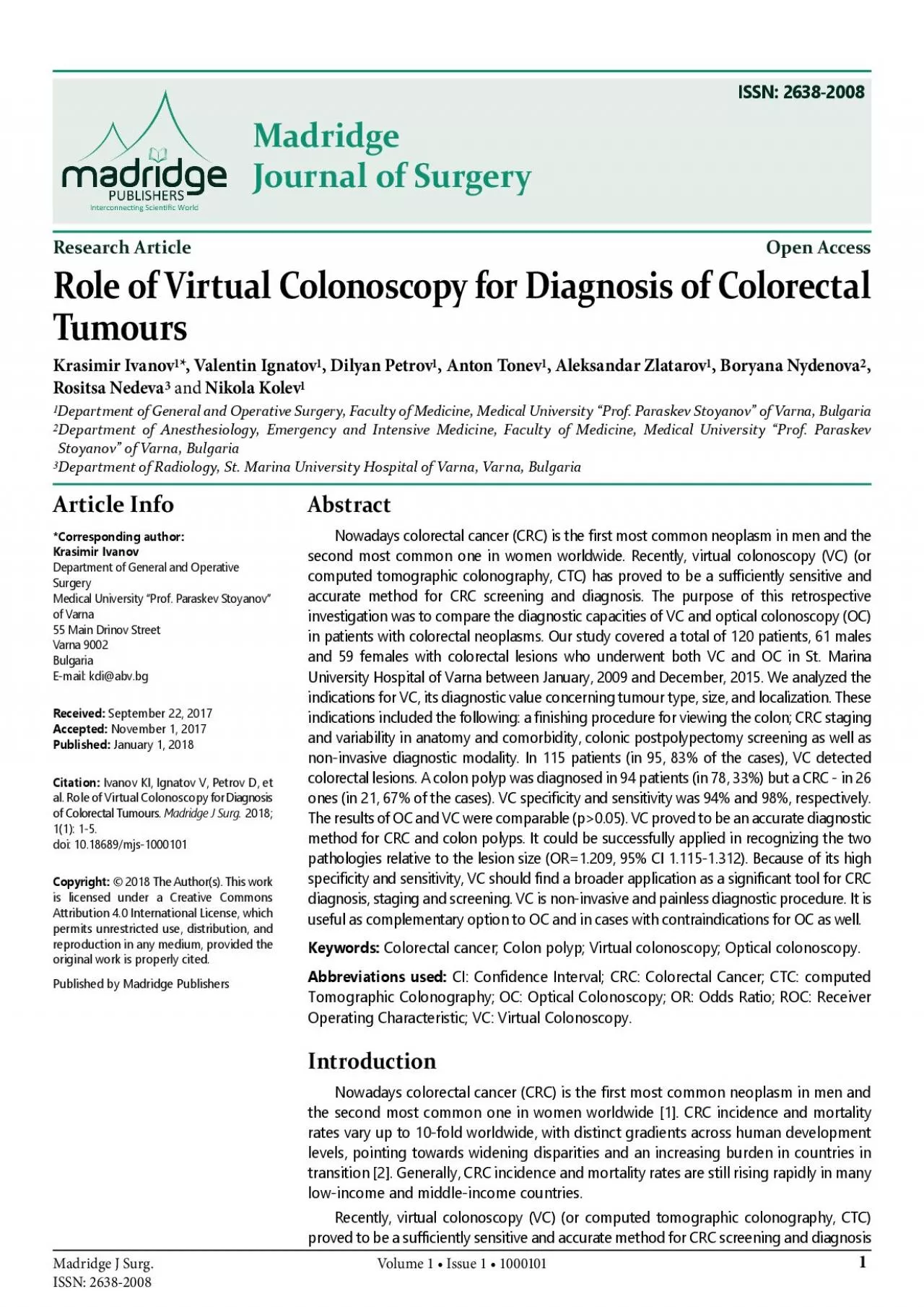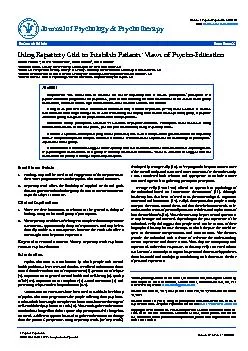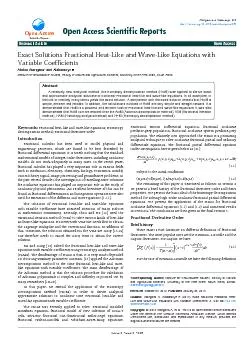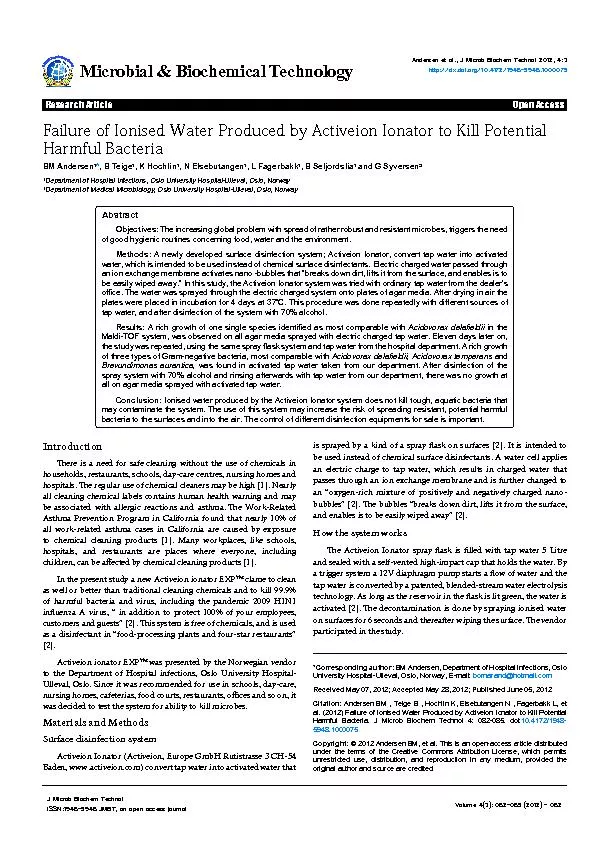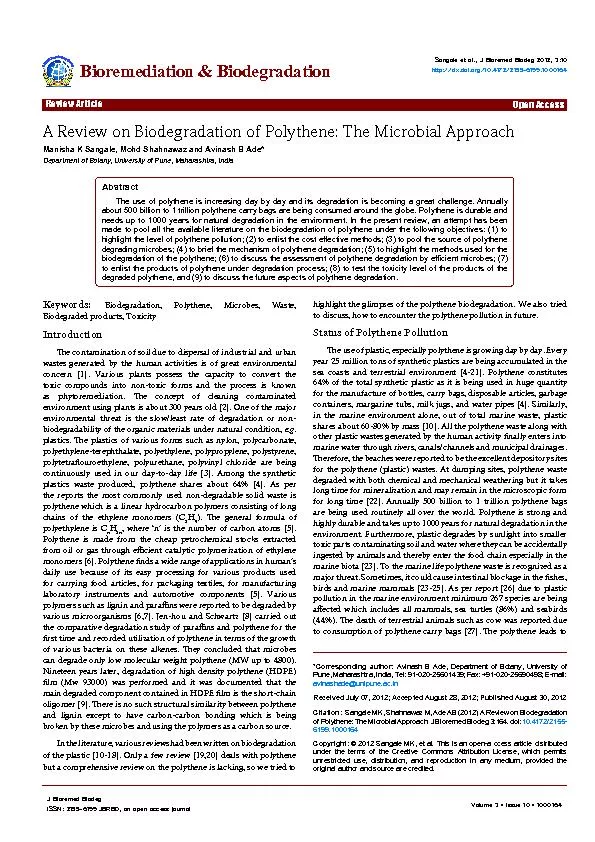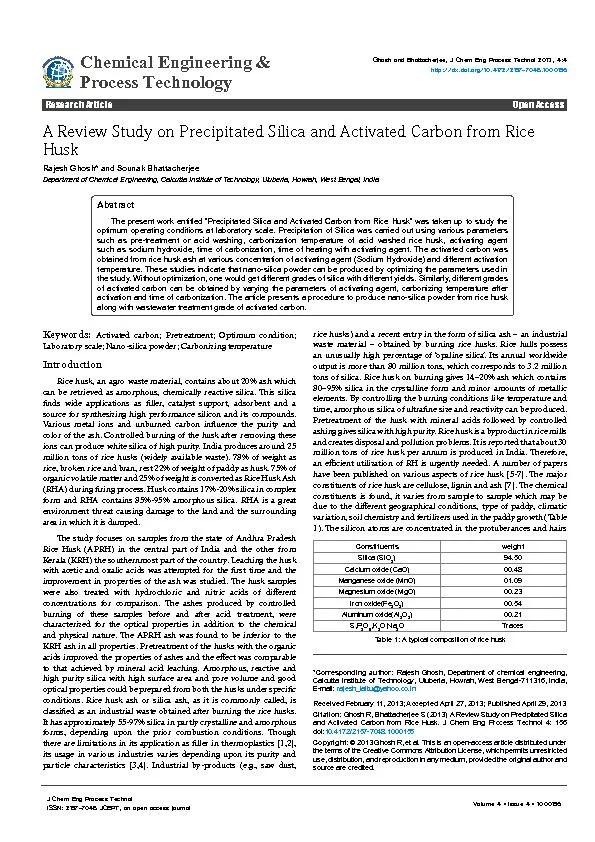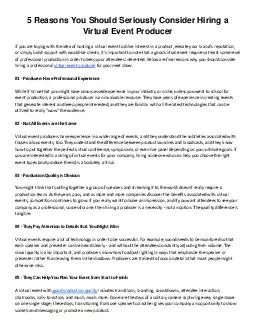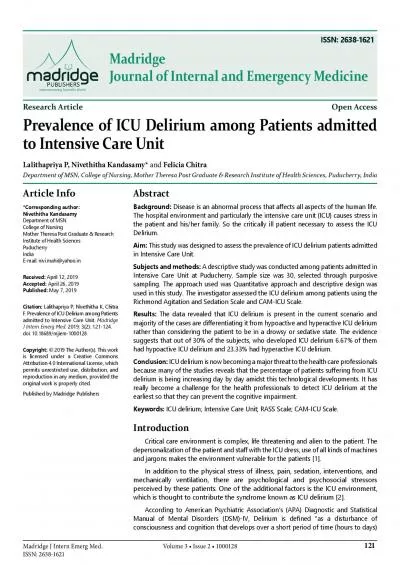PDF-MadridgeJournal of SurgeryResearch ArticleOpen AccessRole of Virtual C
Author : bery | Published Date : 2022-08-24
1 ISSN 26382008 Volume 1 Issue 1 1000101Madridge J SurgISSN 26382008 2 3 4 VC is developed in 1994 by Vining et al 5 It is a new method of imaging the colon in
Presentation Embed Code
Download Presentation
Download Presentation The PPT/PDF document "MadridgeJournal of SurgeryResearch Artic..." is the property of its rightful owner. Permission is granted to download and print the materials on this website for personal, non-commercial use only, and to display it on your personal computer provided you do not modify the materials and that you retain all copyright notices contained in the materials. By downloading content from our website, you accept the terms of this agreement.
MadridgeJournal of SurgeryResearch ArticleOpen AccessRole of Virtual C: Transcript
Download Rules Of Document
"MadridgeJournal of SurgeryResearch ArticleOpen AccessRole of Virtual C"The content belongs to its owner. You may download and print it for personal use, without modification, and keep all copyright notices. By downloading, you agree to these terms.
Related Documents

